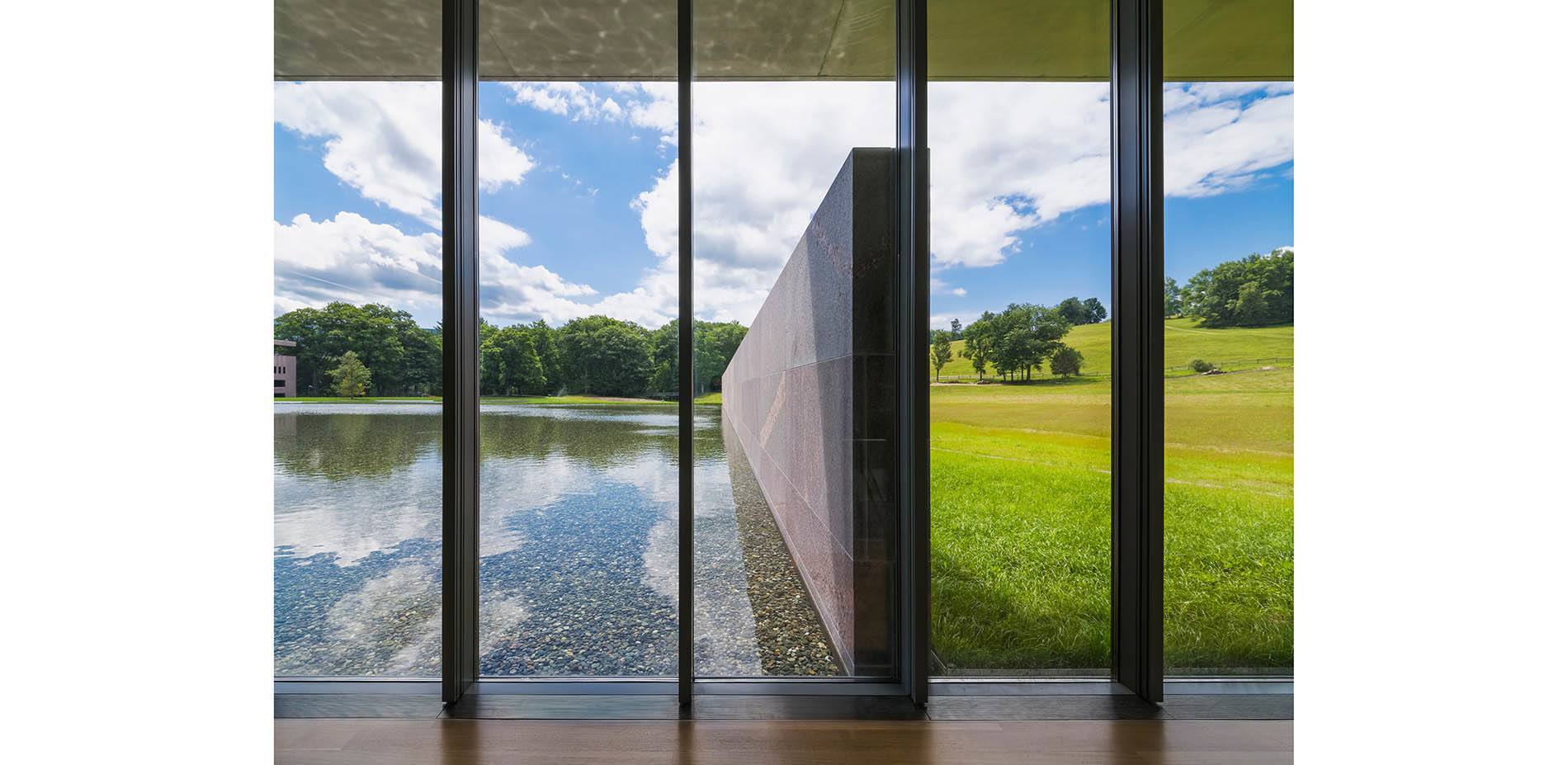
A fourteen-year effort to expand and renew the Clark Art Institute has focused the museum toward its post-agrarian landscape.
Photo Credit: Jeff Goldberg
Media: Please submit high-resolution image requests to images@asla.org.
The Clark’s original configuration turned its back on this extensive landholding
Photo Credit: Esto Photographics, Inc.
Media: Please submit high-resolution image requests to images@asla.org.
Our project radically deepens the institution’s relationship to its landscape, creating a true campus of connections across 140 acres.
Photo Credit: Esto Photographics, Inc.
Media: Please submit high-resolution image requests to images@asla.org.
View from Stone Hill meadow captures Williamstown and the northern Berkshires rim.
Photo Credit: James Ewing
Media: Please submit high-resolution image requests to images@asla.org.
A strong order sets up a moment of revelation at the museum entrance.
Photo Credit: Millicent Harvey
Media: Please submit high-resolution image requests to images@asla.org.
A continuous terrace wraps the reflecting pool, links buildings, and orients visitors toward Stone Hill.
Photo Credit: Steward Cairns
Media: Please submit high-resolution image requests to images@asla.org.
New infrastructure conserves 1,000,000 gallons of water annually.
Photo Credit: Esto Photographics, Inc.
Media: Please submit high-resolution image requests to images@asla.org.
On the site of the former parking lot, a tiered reflection pool unites the Clark’s disparate architectural expressions.
Photo Credit: Jeff Goldberg
Media: Please submit high-resolution image requests to images@asla.org.
Water cascades across granite weirs between tiered pools.
Photo Credit: Millicent Harvey
Media: Please submit high-resolution image requests to images@asla.org.
Two miles of new walking trails enhance visitor and community access to the site.
Photo Credit: James Ewing
Media: Please submit high-resolution image requests to images@asla.org.
A woodland passage connecting to the Lunder Center on Strone Hill.
Photo Credit: Millicent Harvey
Media: Please submit high-resolution image requests to images@asla.org.
Lunder Center with its terraced pattern of mown flats and sloped grasslands.
Photo Credit: Alan Ward
Media: Please submit high-resolution image requests to images@asla.org.
A wood plank bridge amplifies the Clark’s rural character.
Photo Credit: Millicent Harvey
Media: Please submit high-resolution image requests to images@asla.org.
Willows magically scale the new building in an early autumn morning’s fog.
Photo Credit: Millicent Harvey
Media: Please submit high-resolution image requests to images@asla.org.
Photo Credit: James Ewing
Media: Please submit high-resolution image requests to images@asla.org.


















